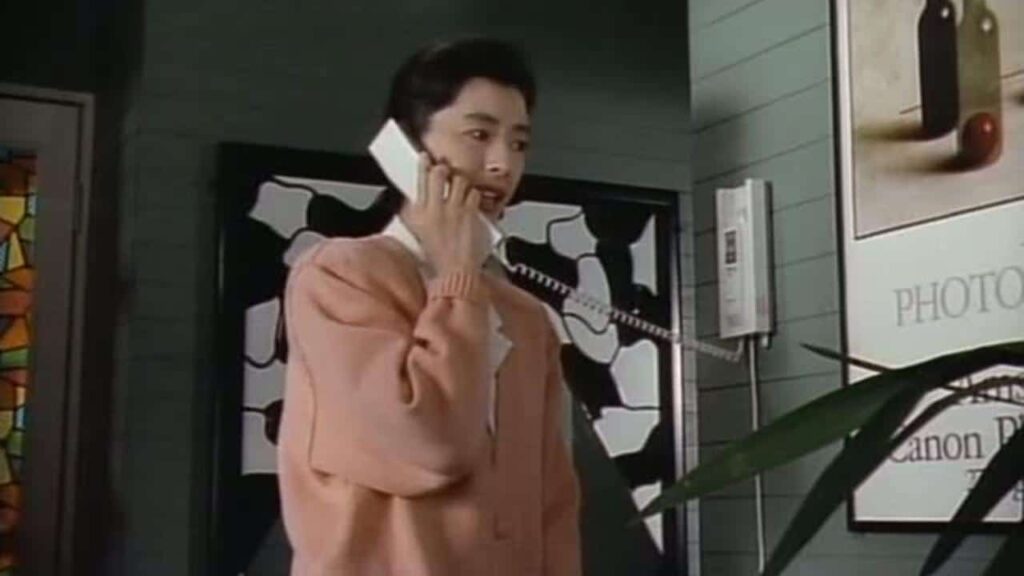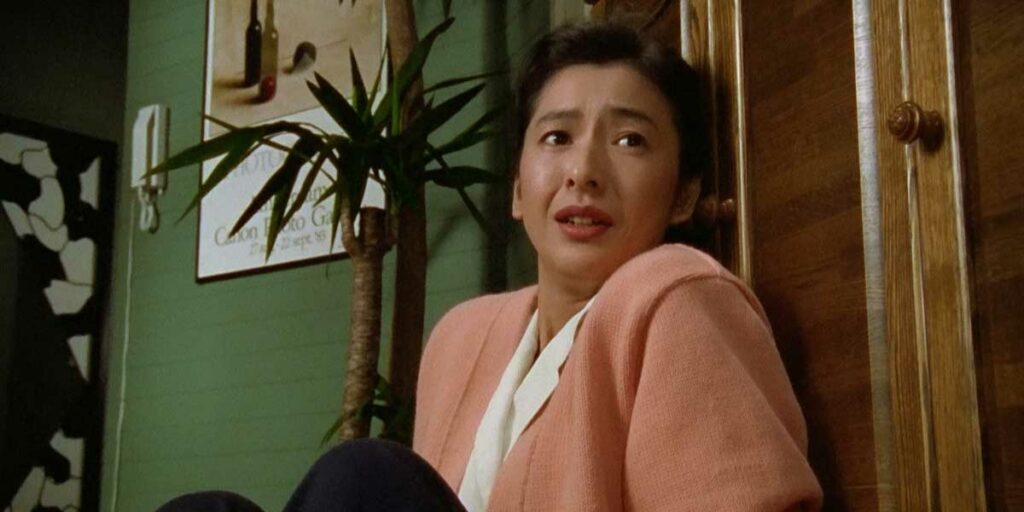Banmei Takahashi’s Door is a hidden thriller/horror gem, with an unsettling performance from Daijirô Tsutsumi that will be sure to keep you up at night.
Homes are a haven. Somewhere to relax after a busy day of work. A space to cook dinner and a place to rest our heads each night. But what if our humble abode became the location of our worst nightmare? This is the premise of Banmei Takahashi’s 1988 home invasion thriller/horror delight Door, an underappreciated throwback among the Fantastic Fest film catalog, that deserves recognition.
Yasuko (Keiko Takahashi) is a stay-at-home mother. She spends the days alone, while her husband, Satoru (Shirō Shimomoto) works long hours, and their son, Takuto (Takuto Yonezu) is at school. If multiple sales calls to the residence throughout the day weren’t bad enough, things take a turn for the worst when an eager salesman pitches up at Yasuko’s apartment to sell his services and can’t seem to take no for an answer.
From the moment that Door begins, something is unnerving about the setting. The apartment Yasuko inhabits is a high-rise with only one escape route, which instantly creates a claustrophobic, trapped mindset as the story unfolds. Banmei Takahashi excels in suspense and tension-building that is complemented by impeccable pacing as the perpetrator’s monstrous intentions are exposed. Even simple shots and sound effects create anxiety-inducing scenes thanks to brilliant directing. From the sound of footsteps coming down the hallway and towards the apartment door, to lingering shots on the entryway as the doorknob slowly turns. Seeing the nightmare unfold from Yasuko’s point of view heightens the disturbing nature of the film. Plus, who knew a door could be so intimidating?
Keiko Takahashi brings a kick-ass final girl energy to the role of Yasuko that captivates, but Daijirō Tsutsumi steals the show, putting viewers’ teeth on edge for the entirety of the film. Even during scenes absent of dialogue, he delivers a spine-chilling performance with the use of effective body language. Furthermore, his character reflects how ill-intentioned individuals aren’t always physically menacing, and at face value, can present themselves as charming, yet turn on a dime.

Door also showcases how people are too wrapped up in their own lives to pay much attention to what’s occurring in front of them. Yasuko is surrounded by many people in the same building, yet nobody listens when she screams for help. During one of the most intense scenes of the film, one onlooker even turns a blind eye after witnessing the aggressive behavior of the wrongdoer.
There are instances during Door where tension is minimized due to an overbearing and distracting musical score that fails to match the tone of the film. As a viewer, you can’t help but wonder why this particular piece of music was chosen to accompany some of the most intense scenes. However, the acting is solid enough during those moments to not take you out of the film completely. It’s clear that Banmei Takahashi enjoyed experimenting during the making of Door, as he balances genres, quirky ideas, and clever camera work to illustrate an unsettling atmosphere.
Once the third act arrives, Door ups the ante as it leans more into horror and gore, giving viewers one of the most distressing sequences portrayed in a masterful birds-eye shot. From then on, the feature gets even crazier, with incidents you’ll never see coming that will shock you to your core. Though rest assured, you will walk away from Door equipped with a satisfying conclusion.
Door was screened at Fantastic Fest. Read our reviews of Totally Killer and A Guide to Becoming an Elm Tree, and You’re Not Me!

